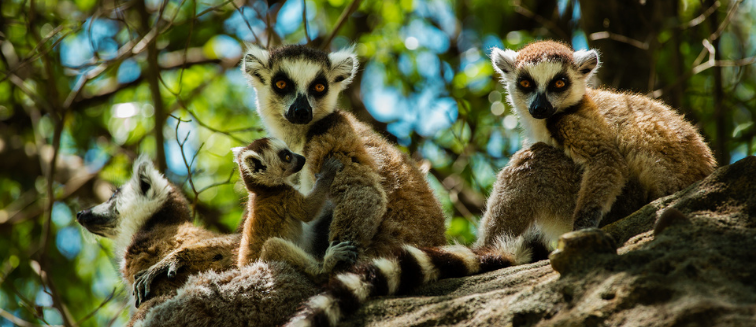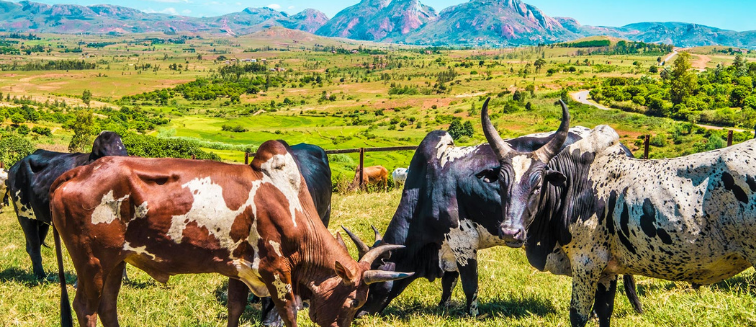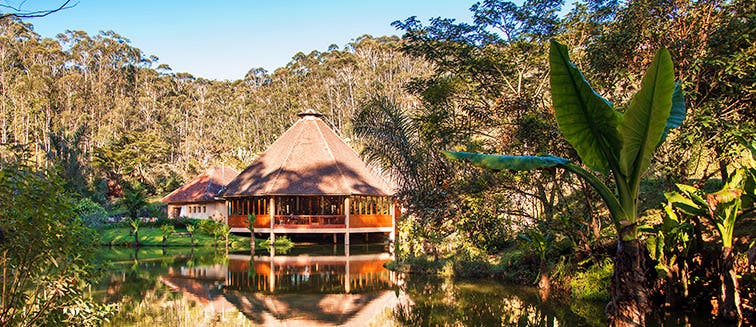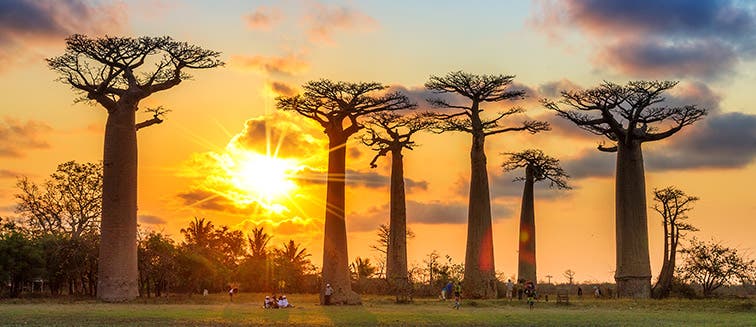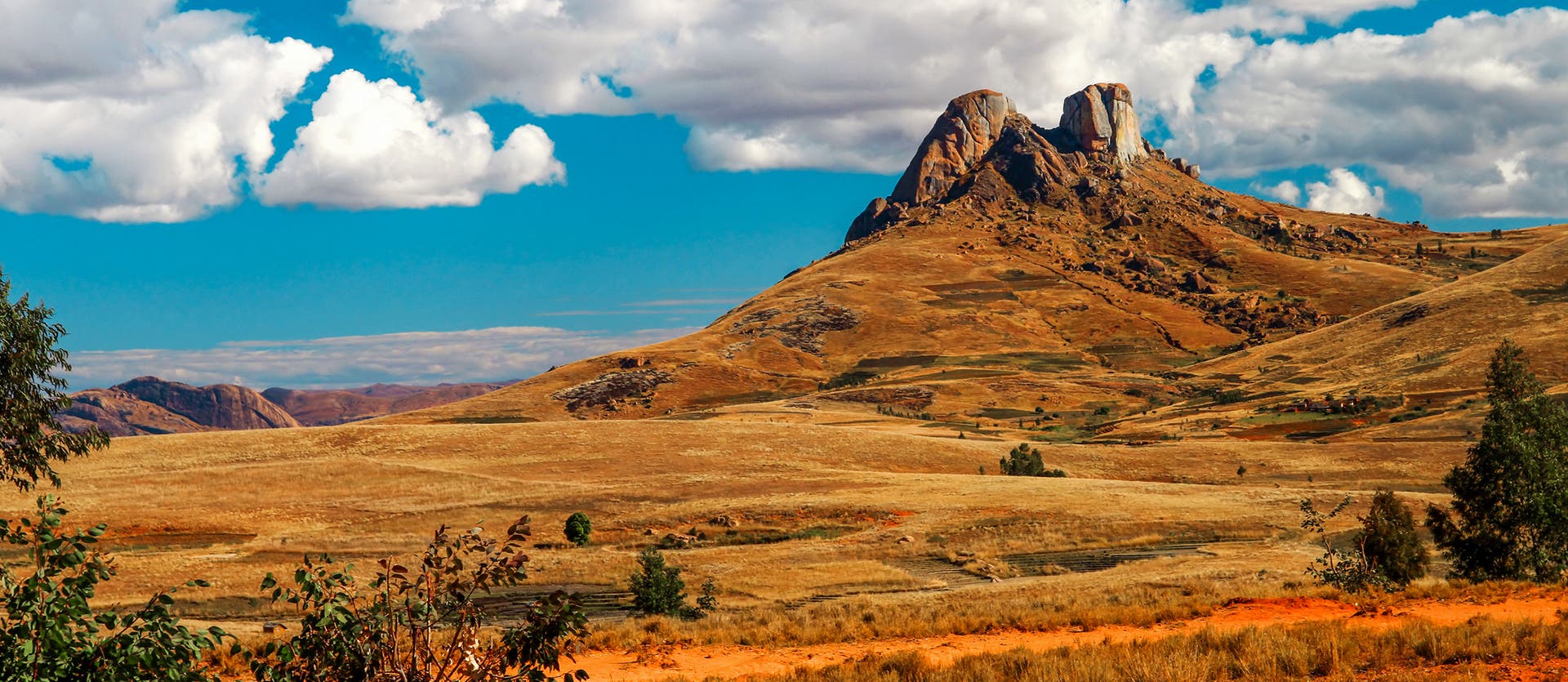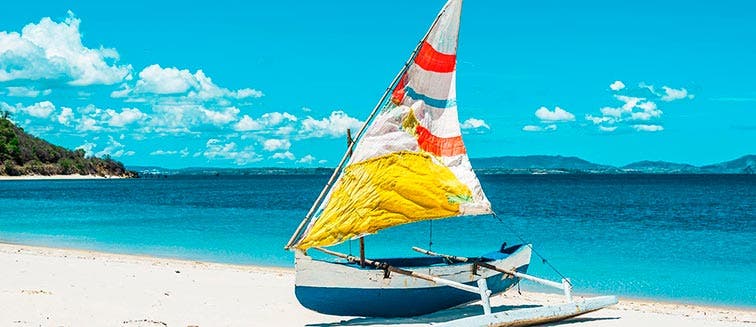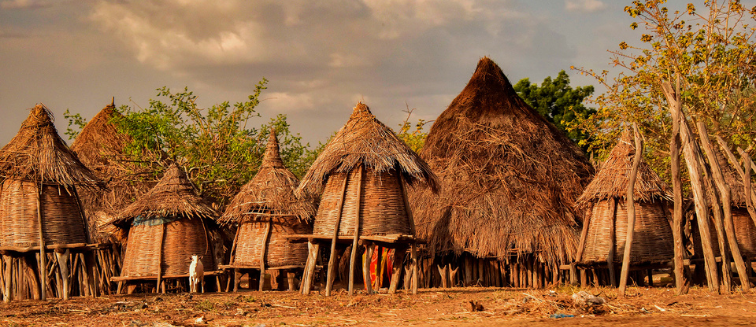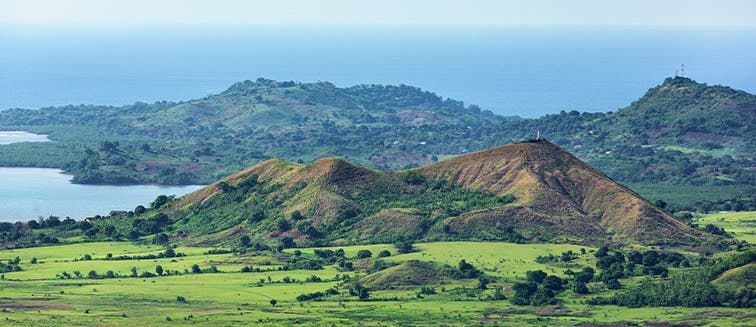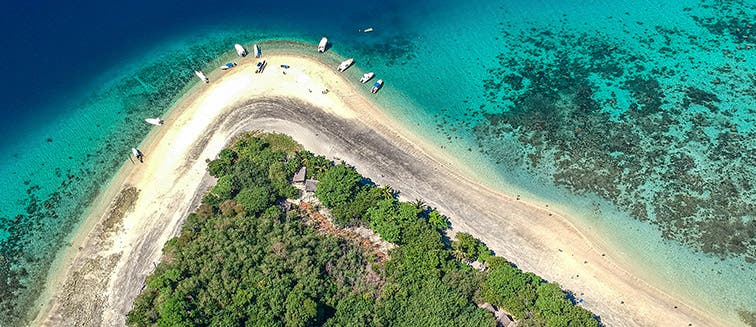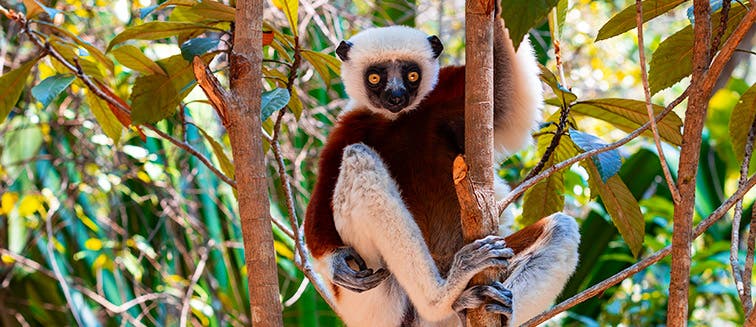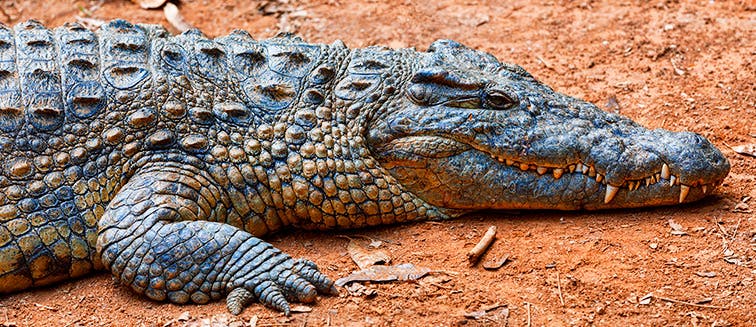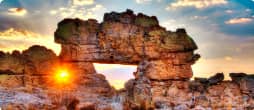Surely you've heard of the island of lemurs and baobabs, an island that has inspired hundreds of legends, especially about pirates. And yes, they are true, at least in part, because there is evidence of the passage of piracy in Madagascar. The Sainte-Marie Cemetery, for example, is where a large number of pirates are buried. It is also said that millions of years ago most of the native animals that today populate the country, first arrived in Madagascar. These four-legged castaways have given rise to the million species that exist today on the island. A holiday to Madagascar will help you to get to know these amazing animals for yourself.
The Republic of Madagascar, located off the southeastern coast of Africa, is the fourth largest island in the world. Divided into twenty-two regions, the capital of Antananarivo is home to almost two million inhabitants. Next in importance is Fianarantsoa, famous for its numerous churches. Toamasina, to the east, is the most important port on the island, while Antsiranana, to the north, is the most cosmopolitan port. The Morondava region, home to fishing villages, is also worth visiting on your tour of Madagascar, as well as the exotic Nosy Be, known for its fragrant ylang-ylang plantations. And speaking of fragrances, there is also Sambava one of the largest producers in the world of vanilla. How about a package-tour of Madagascar to discover it all?
History of Madagascar
The origin of the first settlers on Madagascar might surprise you, since it was populated first by Indonesians rather than Africans, despite being much closer to Africa. Hence, many of its inhabitants retain Asian customs typical of the Southeast Asian region. Subsequently, the Bantu came from the neighbouring continent of Africa. Between the 5th and 15th-centuries, Arab and Persian merchants began to arrive in the north of the island. Soon the Portuguese, Spanish, English and French attempted to take control of the island, although this was not achieved for a number of centuries.
Colonial-Era
During the incursions of the European colonisers and their numerous voyages to Madagascar, many locals were captured to be sold as slaves in Peru. For this reason, there are still Mangache communities in this South American country today. In addition, hundreds of pirates arrived on the island, the most famous of all was Thomas Collins who was appointed as governor of his pirate colony.
From that moment, in 1642, the French, after capturing and sentencing the famous pirate to death, tried to take control of the island. The different kings of Madagascar were undecided between collaborating and rejecting the settlers, but it was between 1882 and 1895 that the war against the French broke out. France took control of the island in 1895, after defeating Ranavalona III, queen of Madagascar at that time. But the unrest did not stop there as the island was occupied by the British in 1916 to prevent Japan from invading. In 1946, France declared Madagascar an overseas French territory before it finally achieved independence in 1960. The decades since have seen a number of different political conflicts and military coups. The current president, Andry Rajoelina, was proclaimed as transitional president in 2009, although it has not been recognized by the African Union or by the United Nations, as they believe he came to power by force.
Culture of Madagascar
Before starting your trip to Madagascar, it is worth knowing a little about the islands fascinating culture. The culture of Madagascar has its roots in the Malagasy people, who were the first colonizers of the island. Although there are different ethnic mixtures and clans, as well as Christian believers and a Muslim population in the north of the country, most of the inhabitants of the island practice the beliefs of their ancestors. The religious beliefs of most Malagasy people are focused on the worship of their deceased ancestors. They are bearers of wisdom, power and protection, and to gain their blessings it is necessary to perform ceremonies and make offerings of food and animal sacrifice.
On the other hand, the ‘Ombiasy’, or sorcerer-healer, also plays a significant role in the community and are in charge of preparing protective amulets and healing the members of their community. Fortune-tellers, known as Mpanandro, have their place in Malagasy society, being highly respected since they have a heavy influence on decision-making within the community. As for language, Malagasy and French are spoken in Madagascar, although it must be said that there are up to twenty-two dialects of Malagasy. Its more than 18 ethnic groups form a melting pot of customs and traditions, which make a holiday to Madagascar an incredible adventure!

